1 Proposed visualization solution
The user interface is oriented on programs like "Tableau" or "Glue" because we
think it is the most easiest and most intuitive way to work with data. Figure 1
shows a very rough prototype of it with just two main parts:
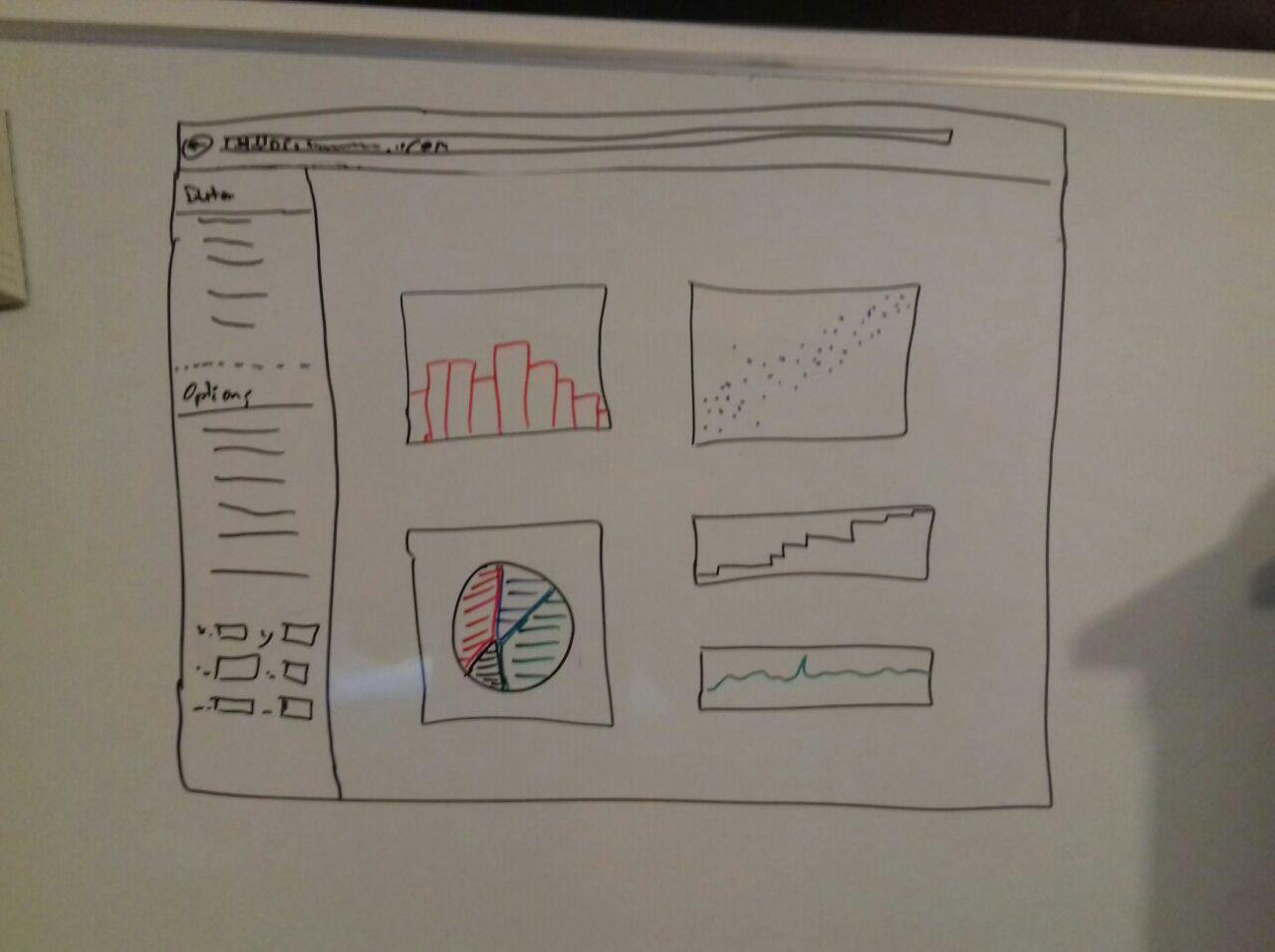
Information view
At the moment the information view, figure 2, is divided in two parts, "Data"
and "Options". Data provides some information about the dataset itself like
name of the table, number of columns, rows and entries or column names.
Options should give the possibility to add plots, interactions and other things
to the plot view.
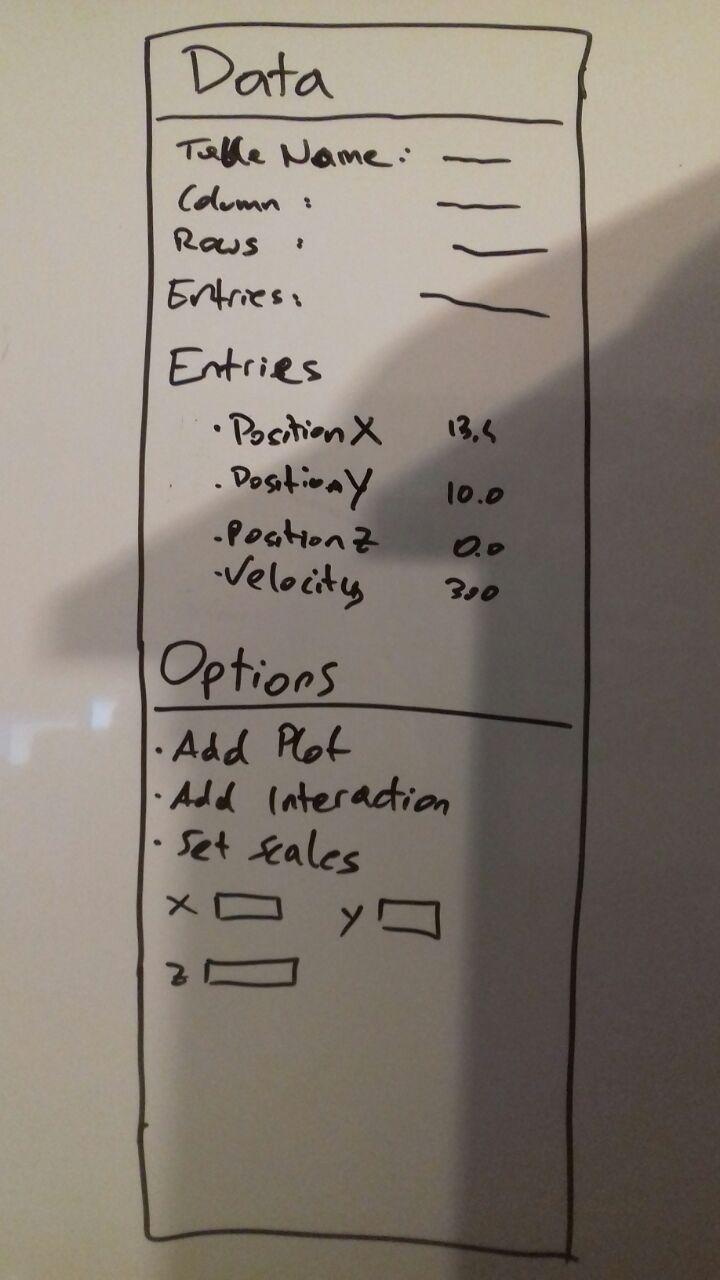
Plot view
The plot view is the area where, like the name tells us, all the plots appear and the interaction happens.
Graph proposals
Since we did not get a real specification of the customer what he would like to get visualize and just told us to try out whatever we want, we came up with a few ideas which might be interesting for astronomers. Unfortunately there are just 4 things, distance to sun, color, position and amount of stars which can be plotted in a meaningful manner, which made it really hard to find good plotting examples. At least we got six ideas so far and hope that the process of working with the data more intense we get new ideas for new plots.
Advantage is to get a good overview of how the stars are distributed in the area around the sun. An disadvantage will be the confusion if there are to many stars and therefore no chance to find any patterns or other interesting things.

Since the universe is a three dimensional space it is easier to see where specific star clusters are located but
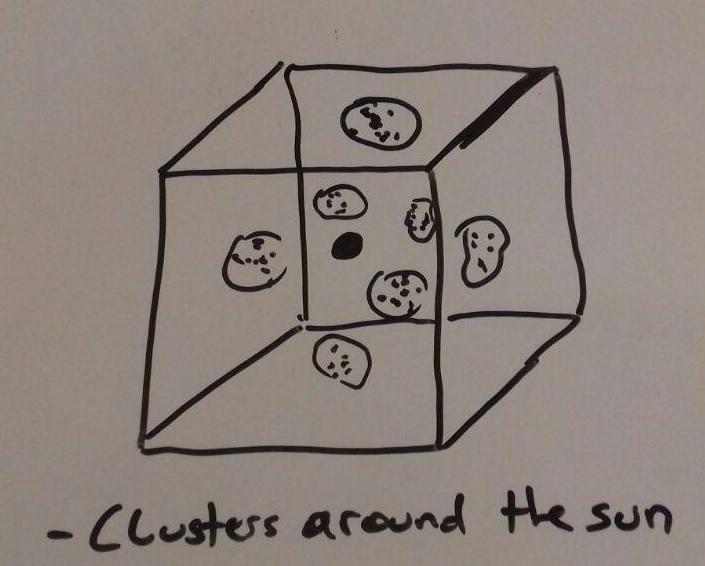
It is very easy to understand but it can give a wrong picture of the data since not all stars has the state of their temperature.
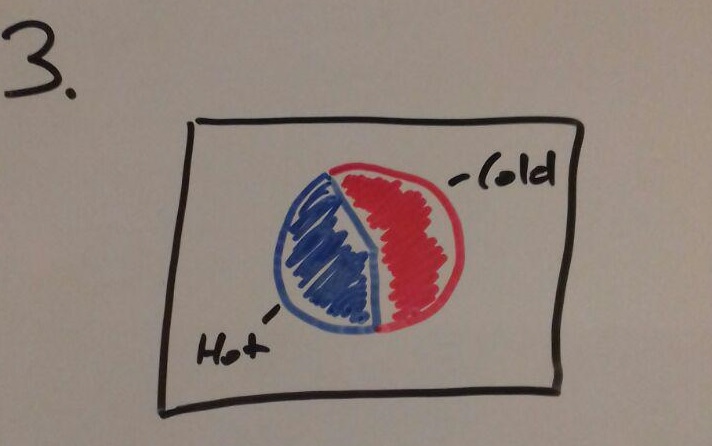
Like the pie it is very self explaining but if for example the scale of the y-axis is chosen wrong at can lead to false interpretation.
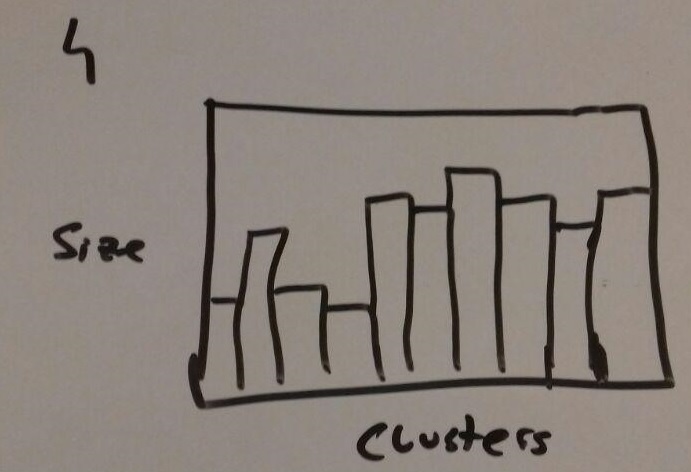
An advantage of this view is that it shows in a good way of how the velocity changes with the distance to the sun but like with the bar chart choosing a good scale for the axis is important.
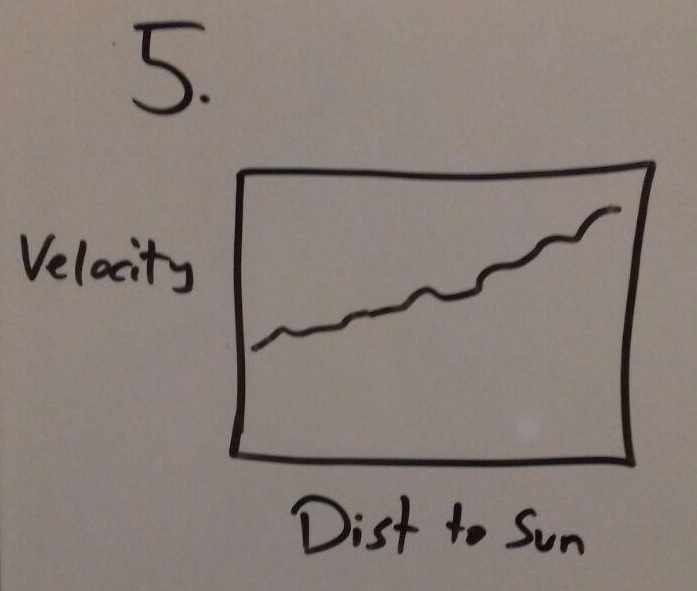
Good could be to see if a star is moving and how much it is moving in terms of time. Disadvantage is that it is hard to compare many stars and how they are moving, because it just will show the motion of one star.
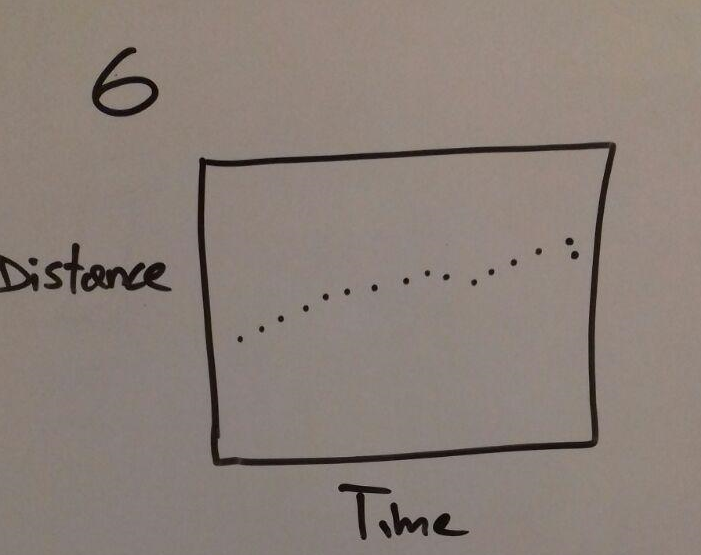
The scatter plot could show the correlation if there is one but it is also possible that the amount of data makes it impossible to find out if a correlation exists.
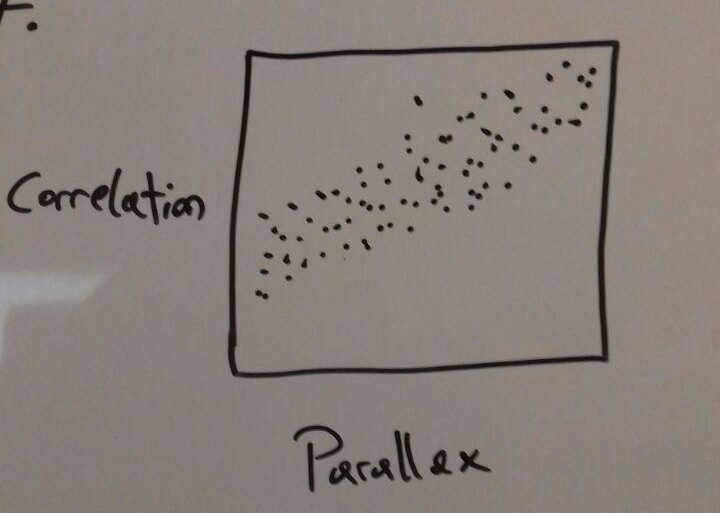
It can give a good overview of how the errors of measurement are distributed inside the star cluster. A disadvantage is that the data are potentially not meaningful because maybe some stars has no error measures and so the plot is corrupted.
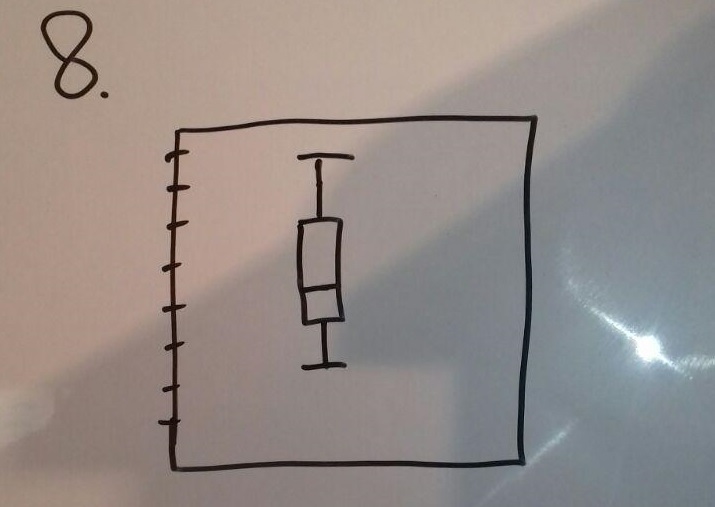
Advantage is it shows if the velocity has an in uence on the error of the stars. Possible disadvantage is that the plot is not meaningful.
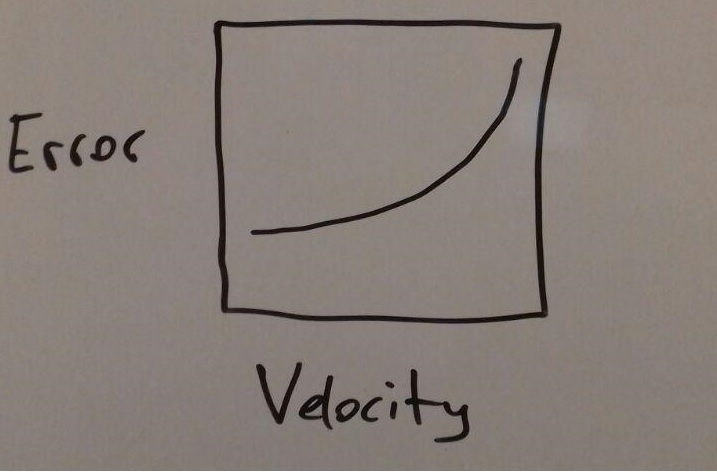
Can give a good comparison of the two different weight types, but since we don't know what it exactly is yet we can not really say if it is a good and useful representation.
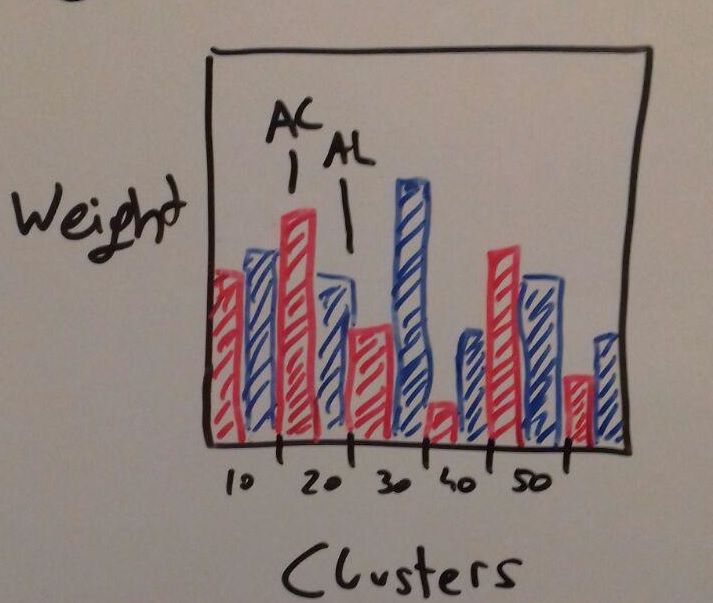
This view gives us the opportunity to compare the velocities of the stars in a specific cluster to make an assumption about the General movement of objects. It is important to choose a good scale for the axis, as in the previous illustration.
.jpg)
Interactions
One dashboard could be to combine figure 4, 5, 6 and 12. While figure 4
shows the star clusters around the sun in a three dimensional context, figure 5 can give us an overview of the ratio of hot and cold stars in the data.
To see how many stars are inside of a cluster, figure 5 can provide the information with a bar chart. Figure 12 contains the two types of weight of
each cluster and compares the cumulated weights. The interactions could
be to click on a specific cluster in the three dimensional representation and
figure 5 and 6 updates their values corresponding to the selected cluster,
while fugure 12 highlights the bars of the selected cluster. Another interaction will be when you just want to see all the hot stars, you can select them
in figure 5 and all other plots updates their view to show only the hot ones.
Advantages:
With this dashboard it is very easy for the user to recognize patterns (e.g.
amount of cold/warm stars in cluster, size of cluster, overall weight of stars
in cluster) inside of to the clusters. The user can interact with this dashboard to gain more knowledge for each cluster in an easy and intuitive way.
Disadvantages:
A big disadvantage of this dashboard is the generalization of the stars into
clusters. The generalization leads to just see an overall information of the
amount of stars and will not provide any information of a specific star.
The second idea is to combine figure 4, 7 and 10. As mentioned before,
figure 4 shows the clusters around the sun in a 3D scatterplot. Figure 7
plots a line graph sorted by the distance to sun for every star and compares it to the velocity of a star. The last figure (figure 10) plots a box plot of the astronomic excess noise significance of all stars. If a cluster of
figure 4 is selected, figure 7 and 10 will plot the line graph and the box
plot just according to the stars contained in the chosen cluster.
Advantages:
See if and how the distance to sun changes the velocity of the stars or star
clusters and how big the astronomic excess noise significance is. It can be
used to see if the error grows with distance and velocity.
Disadvantages:
It will be very time consuming to process and sort the data every time if
an interaction happens. Furthermore many information can be lost in the
single views because not all single stars has all needed data and therefore
the box plot is not completely true for example.
2, 6, 7, 9 The last dashboard shows figure 4, 8, 9, and 11. Figure 4 plots
all stars in a 3D scatterplot in which the user can zoom in and out to get
a better sight of the stars. Figure 8 plots the movement of a star in a certain time compared to the distance of this star. For this plot there will be
used a 2D scatterplot with brushing and linking to have a clearer view of
the data. Figure 9 shows also a 2D scatterplot with brushing and linking
with the distance to the sun of each star compared to the correlation of
the distance to the sun and movement of a star. The last figure plots the
error of velocity compared to velocity of each star as a simple line graph.
One interaction will be the tooltip technique in figure 4. If a star is clicked
in the 3D scatterplot, there will popup a tooltip with useful informations
about this star. Furthermore the movement of the star will be plotted in
figure 8. Another way to select a star for figure 8 will be to click a star in
figure 7, which will also lead to zoom in to the chosen star in figure 4.
Advantages:
The big advantage of this dashboard is, that the user is able to gain information and interesting patterns about specific stars and not only a whole
cluster.
Disadvantages:
The disadvantage can be that the user will be overwhelmed of the amount
of data and is not able to extract useful information of for example figure 9.
This dashboard is similar to the first panel (the same disadvantages and
advantages), except that it does not contain information about hot and
cold stars. It also contains error information of a specific cluster (figure 10), and a linear graph representing the stars velocities in the selected cluster (figure 13). A more detailed description can be found in the scenario
below.
VIS Techniques
Because of the big amount of data, the zoom technique is very important for the stars around the sun and clusters around the sun 3D scatterplot. With the billions of stars in a dataset the plot has so many dots (stars) in it, that the user wouldn't be able to extract relevant information of the plot. The user should be able to zoom in and out of the Scatterplot and turn the plot around to get another sights of the distribution and information of stars and clusters.
Combined with the zoom function, the tooltip technique shows special information of a dot (e.g. name of the star, weight, distance to sun,...) if a star/cluster is clicked. This can be very useful if a dot attracts the attention of the user because of a strange behaviour (e.g. bunch of stars in a close area).
The brushing and linking will be very helpful for the user to set limits to the min and max value of a scatterplot. For the 2D scatterplots there we have the same problem as with the 3D scatterplot. Because of the amount of data the user will be overwhelmed of the information and won't be able to extract useful information of the plot. With the brushing and linking technique the user can decide on his own what minimum and maximum is interesting to see for him and so can also just have a look on small parts of the data.
For all of the plots we will need filters to filter useless data which will have no values, null values or other values we could not process.
The dimension stacking is used for the mean astronomic weight of the source in AL and AC direction compared to each cluster. The user has a fast overview of both weight variables for each cluster, which is triggers an interaction with other plots if clicked. This can help to determine eyecatching information of special clusters very fast.
2 Scenario of use
Fictitious user
Joao Alves is a professor for astrophysics at the university of Vienna. He is
performing research in different topics of astronomy.
These are his research areas:
Possibly Tasks
First thing we did, was meeting with Professor Alves. We explained our project
to him and asked him to give us some ideas and information about tools for
completing our task. He stated that astronomy researchers only engage in looking at parts of the universe most of the time, but what is interesting for Alves is
the "big picture", so he said. He gave us the task to get to know the data and
to present parts of it in a visualization that makes it easier to see coherences.
The task was not so specific, but it is important that we look through the Gaia
catalog and find interesting patterns and then visualize it in different plots. For
him it is probably very helpful, as one of his research areas is "The structure of
the Interstellar Medium". So, he can reference our graphics while working with
the Catalogs from Gaia and quickly sees how a particular area he is looking at
reacts with in a bigger range.
Based on the available data and information retrieval, we can assume that the
following problems can be solved, or at least can be a little improved to their
solution:
Specific problem and scenario
For the scenario were chosen the latest model (dashboard) and the problem of
detecting black holes. As already described above: by observing the stars, it is
possible to make assumptions about their existence. Of course, only these data
are not enough for approval (we also need data from radiation and observations
in the optical range, for example), but it is suficient for the initial assumption
and for further, more detailed study. In this problem, cluster analysis of stars
can help us, which can tell us about quasars, globular or open clusters of stars
or even new objects. It may also be useful to study the general motion of stars
of a certain cluster. A potentially existing black hole in the center of the cluster
acts as a cosmic "spoon" that mixes the stars, resulting in these stars moving
at higher speeds and longer distances. Observing the behavior of stars gives a
hint of the existence or absence of a black hole in the center of the cluster. So,
the main method of searching for black holes at the present time is to study
clusters (their density, for example), brightness distribution and velocity of stars.
1. User creates a new file.
2. Selects data for analysis.
3. Specifies the name and required configurations.
4. He studies the first and third illustrations to identify a huge cluster.
of stars or new objects in the first plot as a secondary task.
5. The user is a bit confused, because he uses the program for the first
time, and does not know how to get a more detailed view of a particular cluster. He clicks on the help button and gets the information he needs.
6. Clicks on the largest cluster for a more detailed study. (By clicking, the cluster is highlighted in the first illustration, the bars of the diagrams on the third and fifth graphs in accordance with the cluster, the remaining diagrams are updated).
7. Explores the second graph to see if the data is significant.
8. If not, then goes to a smaller cluster, or downloads / rechecks the data, changes the configurations.
9. Explores the fourth and fifth graph.
10. Identifies the general movement of the cluster, high velocities and masses, and hence high luminosities (It was found that the more weight, the higher the luminosity of the star).
11. Makes an assumption about the existence of a black hole.
12. Data is saved by clicking "Save" or "Save as" button.
13. Clicks on the button "About us" to read about us.
14. The user proceeds to other methods of research to confirm or refute the hypothesis.
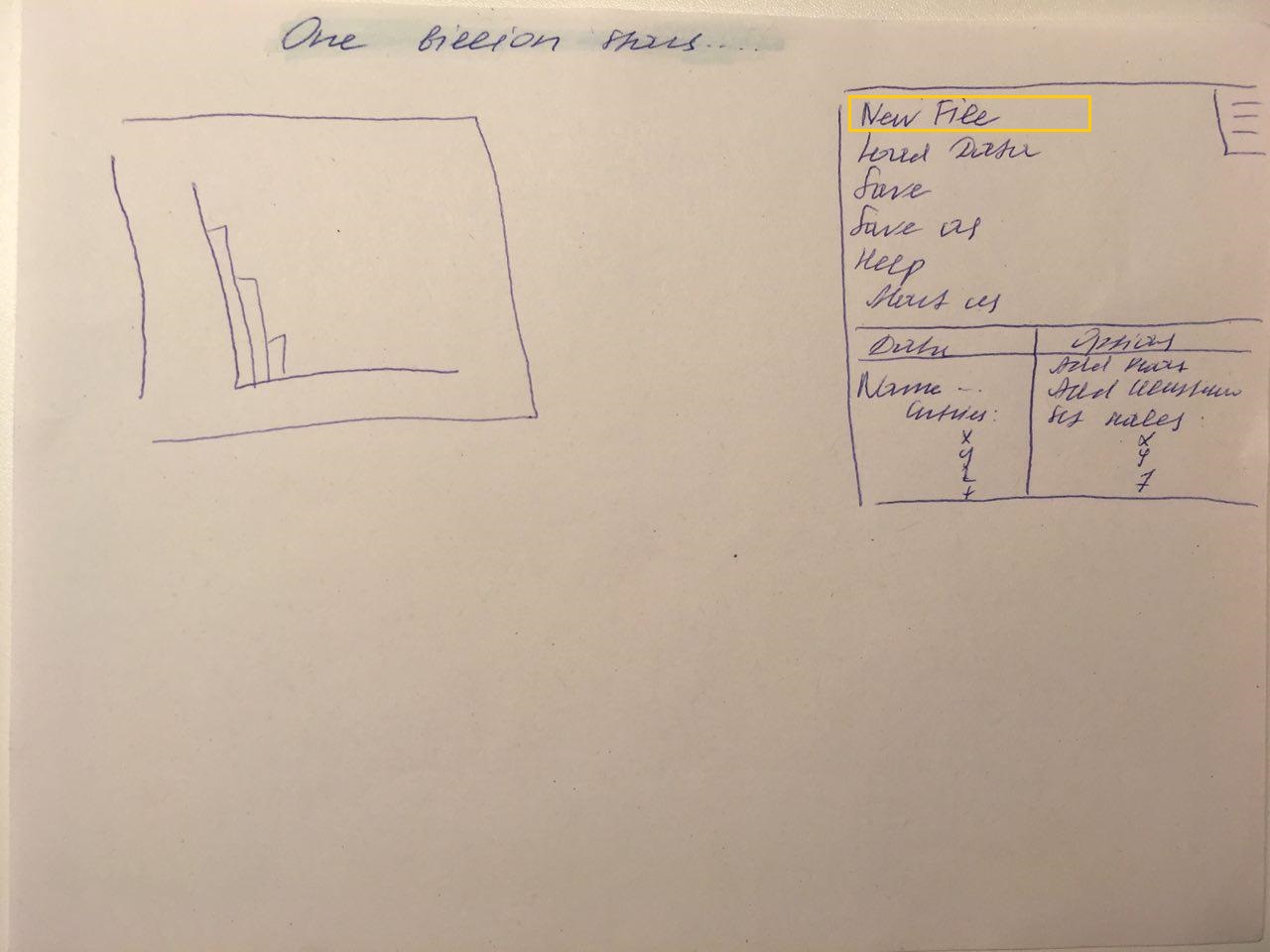

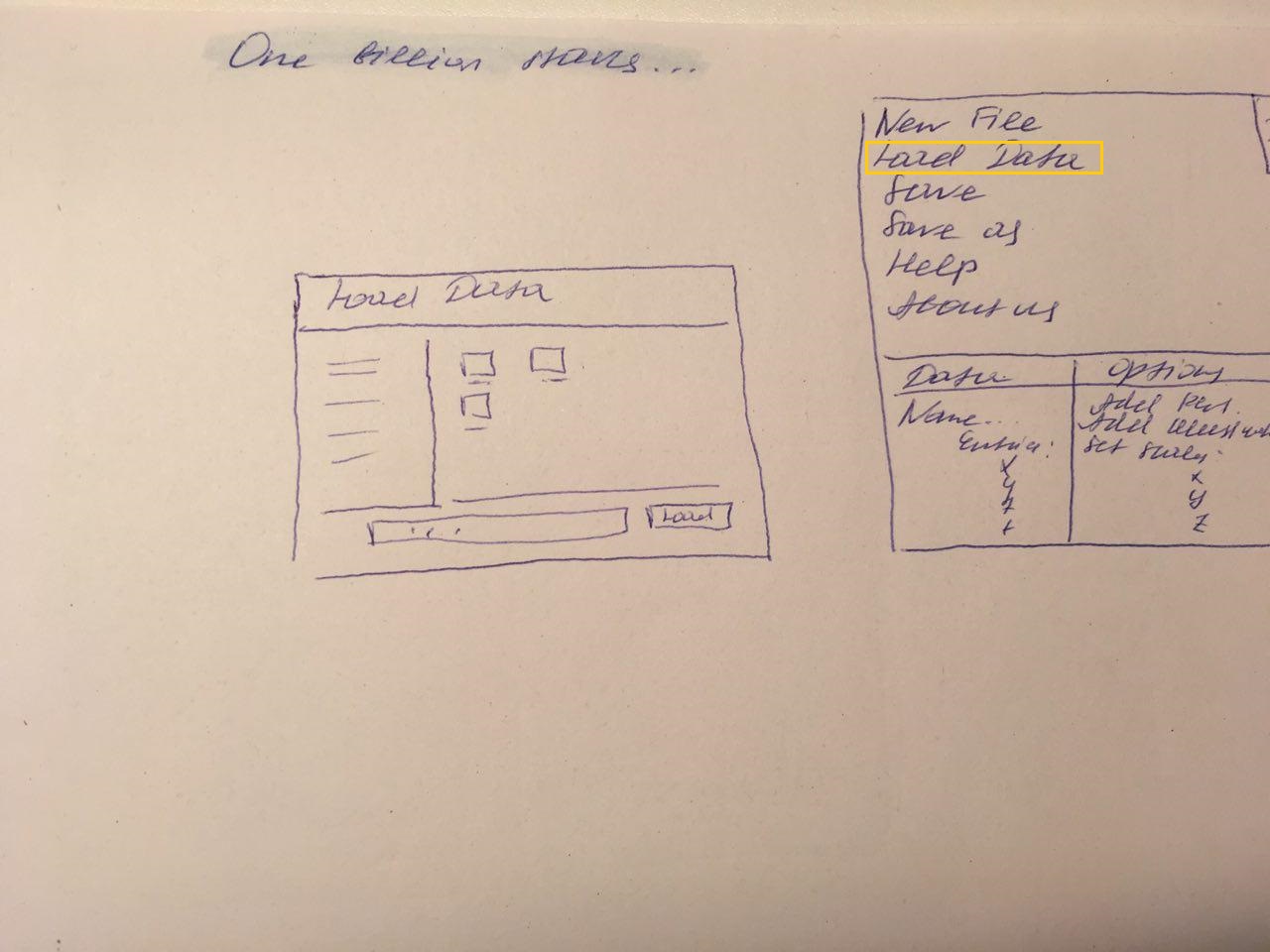

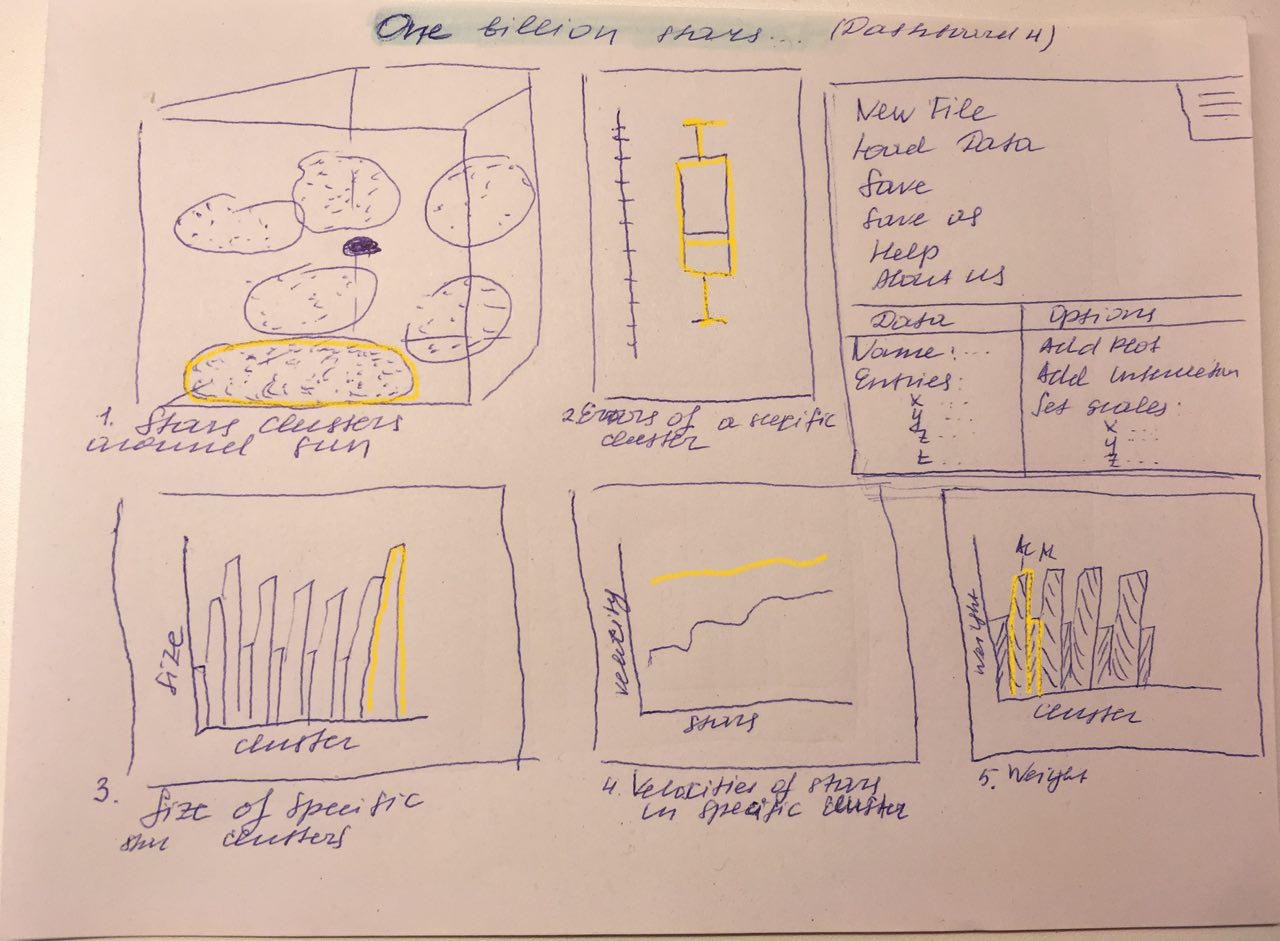
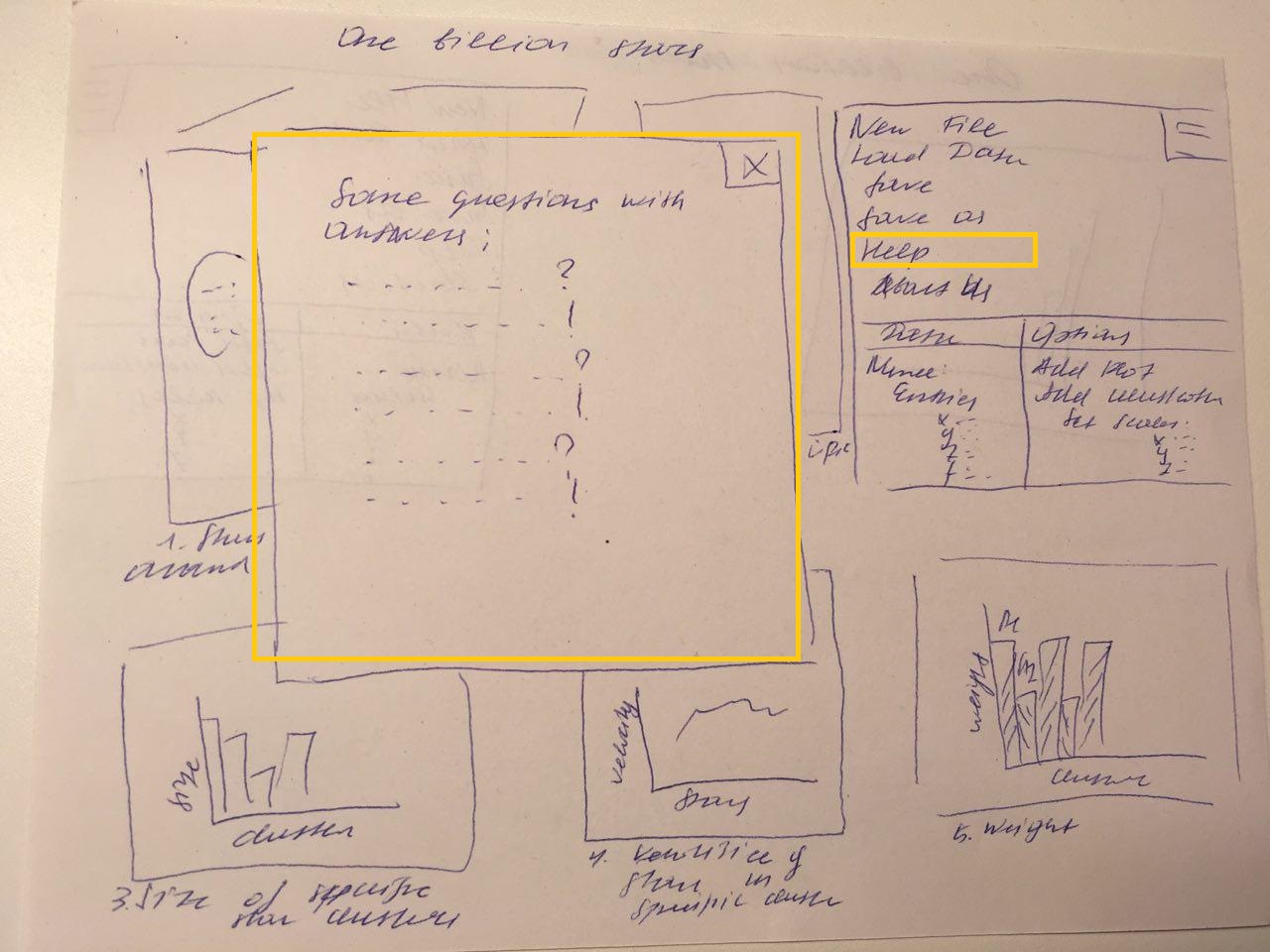
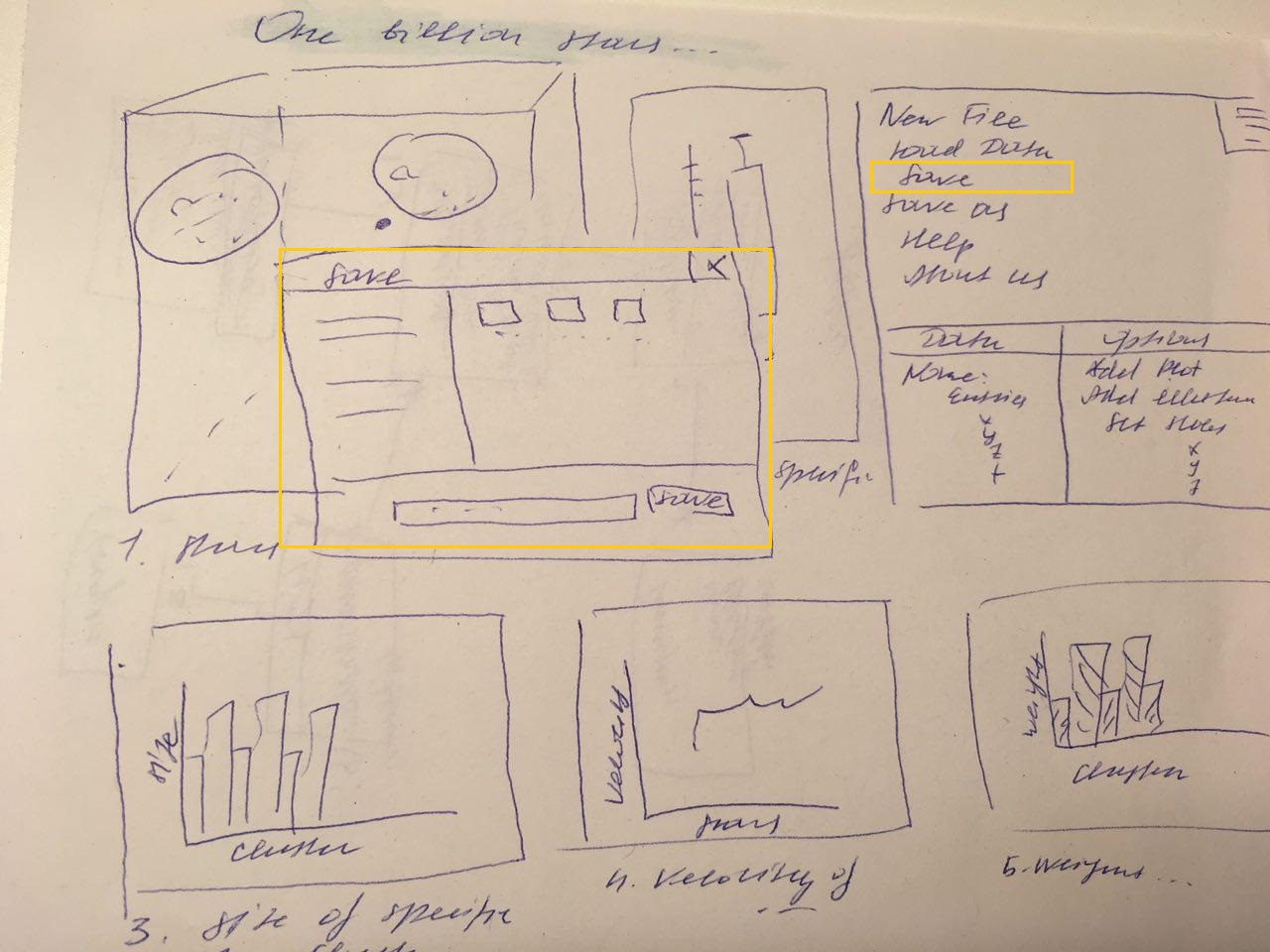
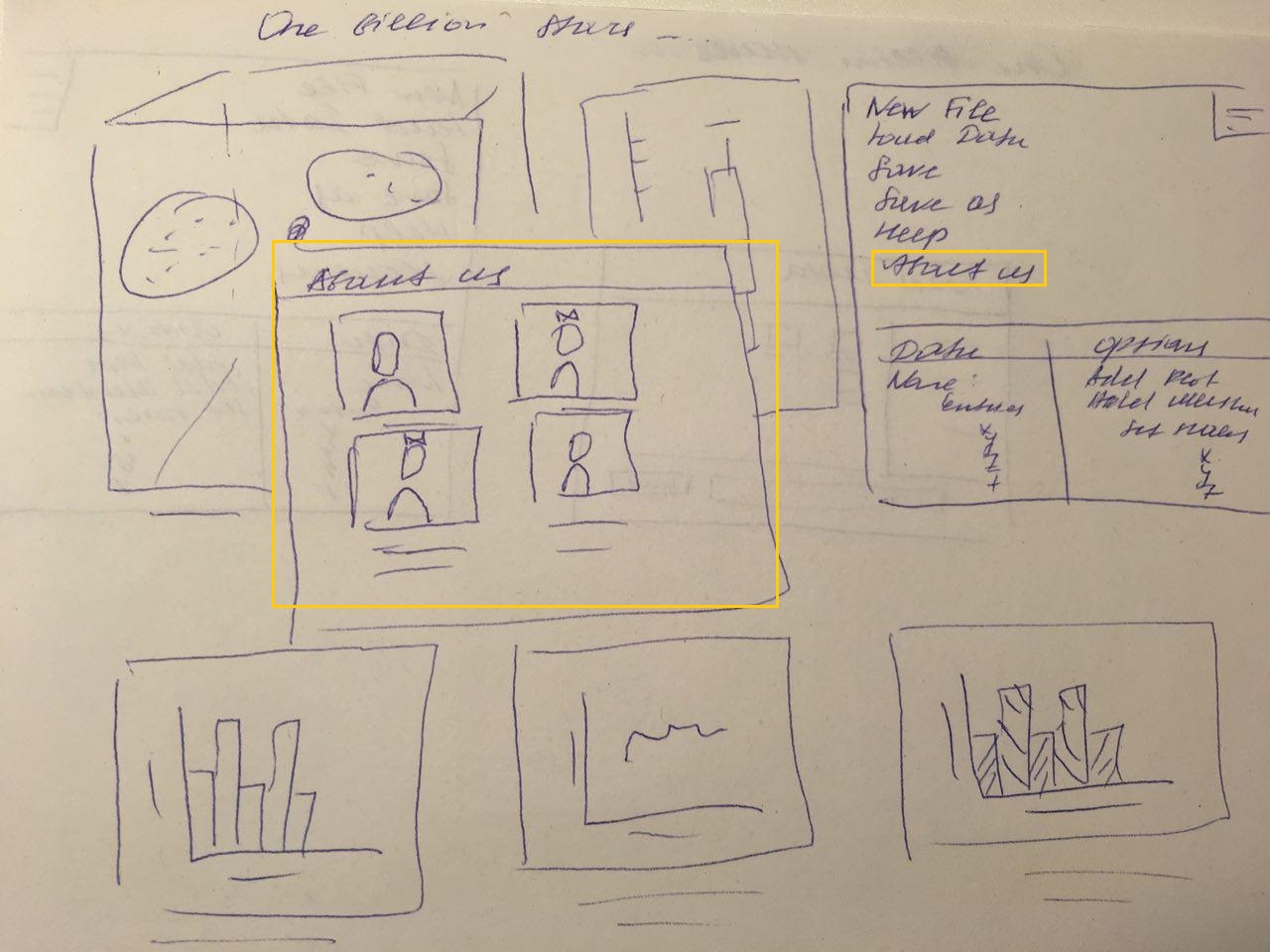
3 Implementation details
For protyping we will use Tableau, because we think it is a great tool for creating some quick views and planning how the end project should look like. We also tried softwares recommended by Joao Alves and his PhD-Student. Topcat for example helps us to go through the data and filter out the important parts. Glue is another program that helps us to gain insight for the data we are dealing with. For the end project, we are will use d3.
4 Milestones
At this point, we cannot tell, who will do what for the project because there are many big tasks which we want to distribute fairly among us four. There are not really tasks that can be completed by one person only, so we will try to communicate and work together on all of them as good as possible.
5 The work distribution
Expand on your proposed visualization solution. Benjamin + Alexander + Axinya (only figure 13 and dashboard 4)
Present a scenario of use, using sketches and text to demonstrate how the user accomplishes a specific task with your tool.
Implementation details. Nicole
Milestones that break down the work into smaller parts. Nicole
Website. Axinya + Nicole
6 References
1. Our website: http://wwwlab.cs.univie.ac.at/~a1368965/vis17/
2. https://medienportal.univie.ac.at/uniview/professuren/cv/artikel/univ-prof-
dr-joao-alves/
3. vis lectures
4. http://gaia.ari.uni-heidelberg.de/tap/tables
5. http://sci.esa.int/gaia/
6. http://sci.esa.int/gaia/58275-data-release-1/
7. https://en.wikipedia.org/wiki/
8. http://www.mattboldt.com/demos/typed-js/